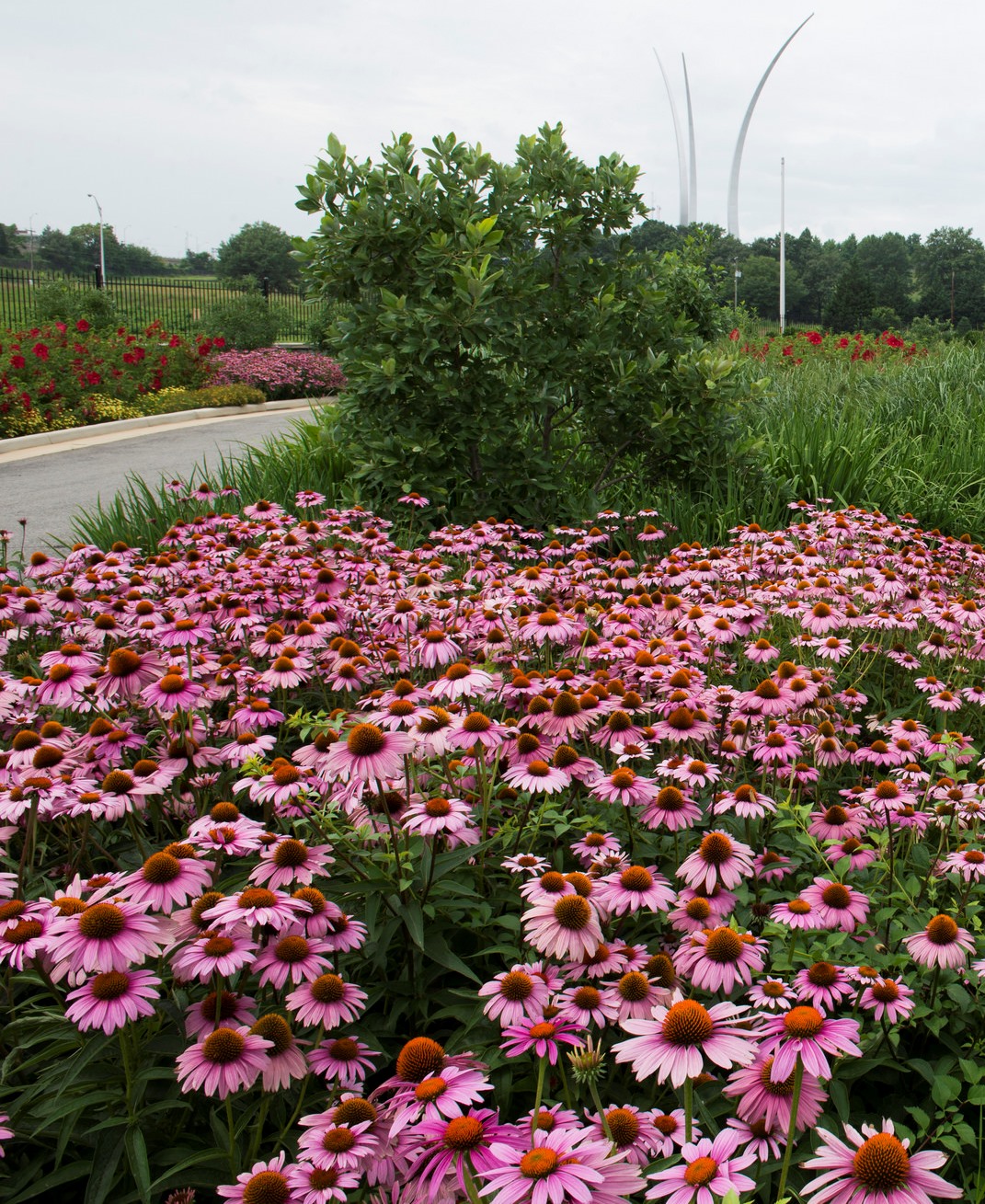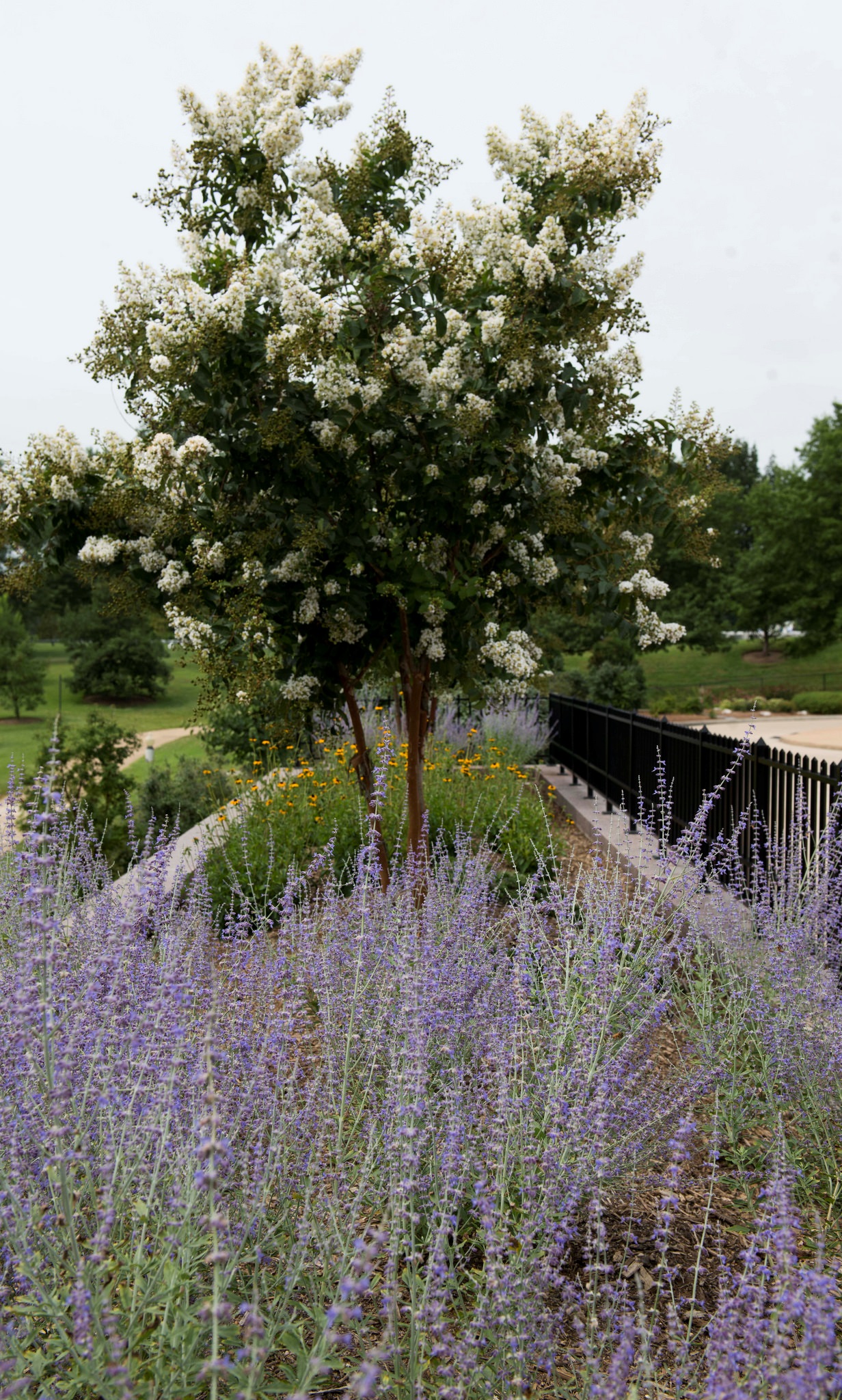Sustainable Practices

The Memorial Arboretum is committed to maintaining the formal integrity of older and more established landscapes. At the same time, we are:
-
Designing conservation-oriented landscapes that serve an ecological function and are aesthetically pleasing.
-
Creating gardens that thrive without continuous irrigation. Native plants often take center stage in these types of landscapes, but non-invasive, non-natives can fill that niche as well.
-
Selecting trees not only for their aesthetic and wildlife qualities, but also for their disease resistance. This is especially important with dogwood, cherry and crabapple trees, all of which are particularly vulnerable to both diseases and insects.
-
Incorporating rain gardens to reduce nutrient and sediment run-off.
-
Striving for diversity in all of our plantings — a key factor in sustainable landscapes.
Native Plants
Landscapes that support local wildlife are key to the cemetery’s sustainability initiatives. Plants native to this area evolved with native wildlife, making them more palatable to local insects, birds and other fauna.
Ninety-six percent of our birds, for example, rely on protein-rich caterpillars to feed their young. These migratory birds find caterpillars on more than one thousand majestic native oaks (Quercus) at ANC. Squirrels and chipmunks seek out basswood trees (Tilia) for their seeds. The peeling bark of river birches (Betula nigra, pictured), tucked in along Custis Walk and Columbarium Court Nine, offers hiding places for wintering insects, which in turn provide fuel for hungry woodpeckers. River birch beds along Custis Walk are also filled with milkweed plants (Asclepias). The leaves of milkweed plants provide food for monarch butterfly larvae, while milkweed flowers provide nectar for moths and hummingbirds as well as other butterflies.

Rain Gardens
Rain gardens are constructed landscape depressions that allow water to soak into the ground instead of running into storm drains. The benefits of rain gardens are numerous: They reduce and filter sediment and pollutants, control flooding and erosion, and support native plants that feed butterflies, moths, bees and birds.
Arlington National Cemetery has rain gardens located near the Administration Building and at the south end of the cemetery.
 Drought-Tolerant Plants
Drought-Tolerant Plants
When selecting plants, a crucial factor to consider is the amount of water a plant will require not only to survive, but to thrive. The grounds of Arlington National Cemetery experience very little irrigation. With the exception of annual flowering plants, ANC staff selects plants that are able to survive on their own in hot summers with little water. For example, the periwinkle (Vinca minor) that once filled Columbarium Court demanded four long months of watering, so we replaced it with drought-tolerant ice plant (Delosperma), stonecrop (Sedum) and Liriope. ANC continues to experiment with drought-tolerant ground covers.